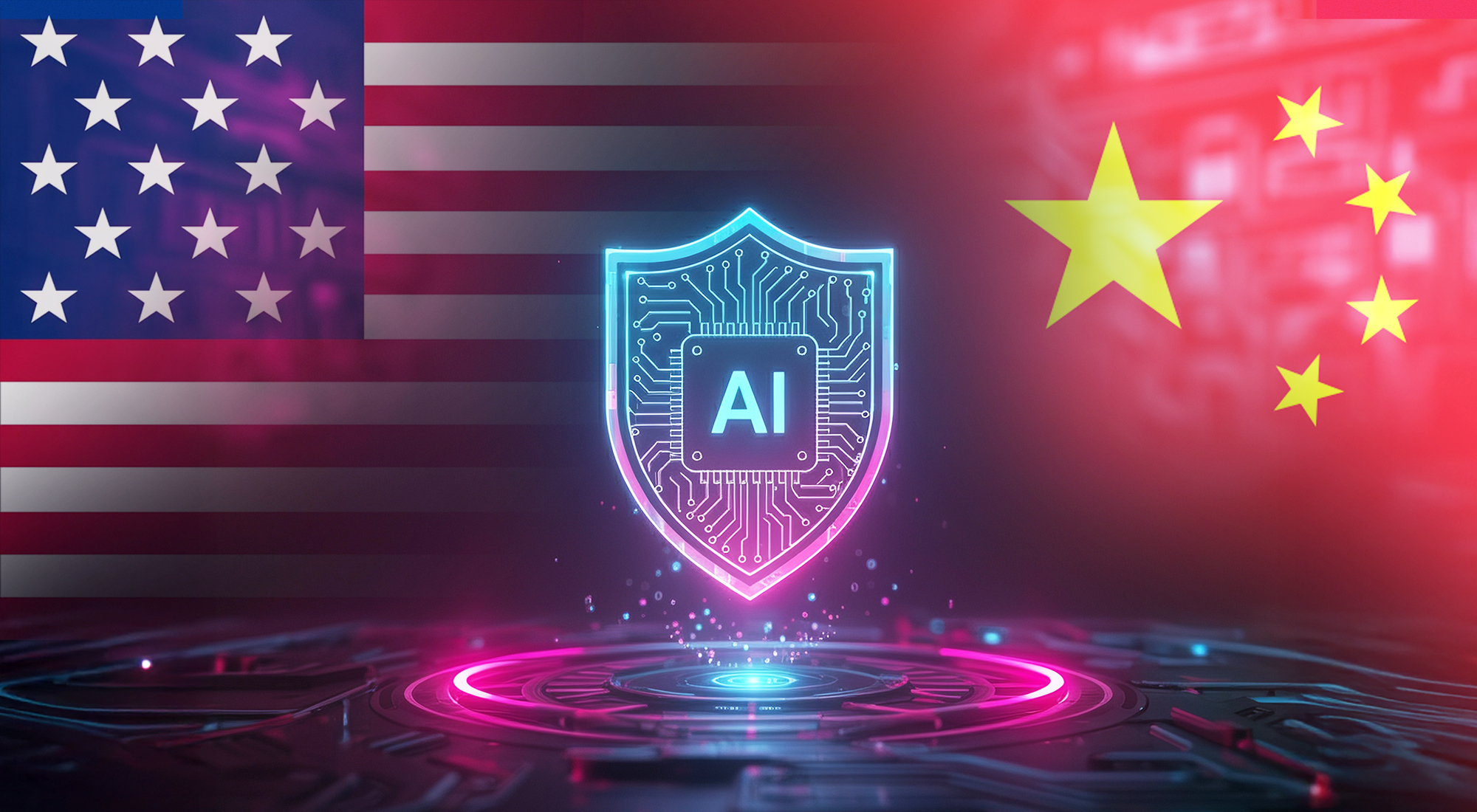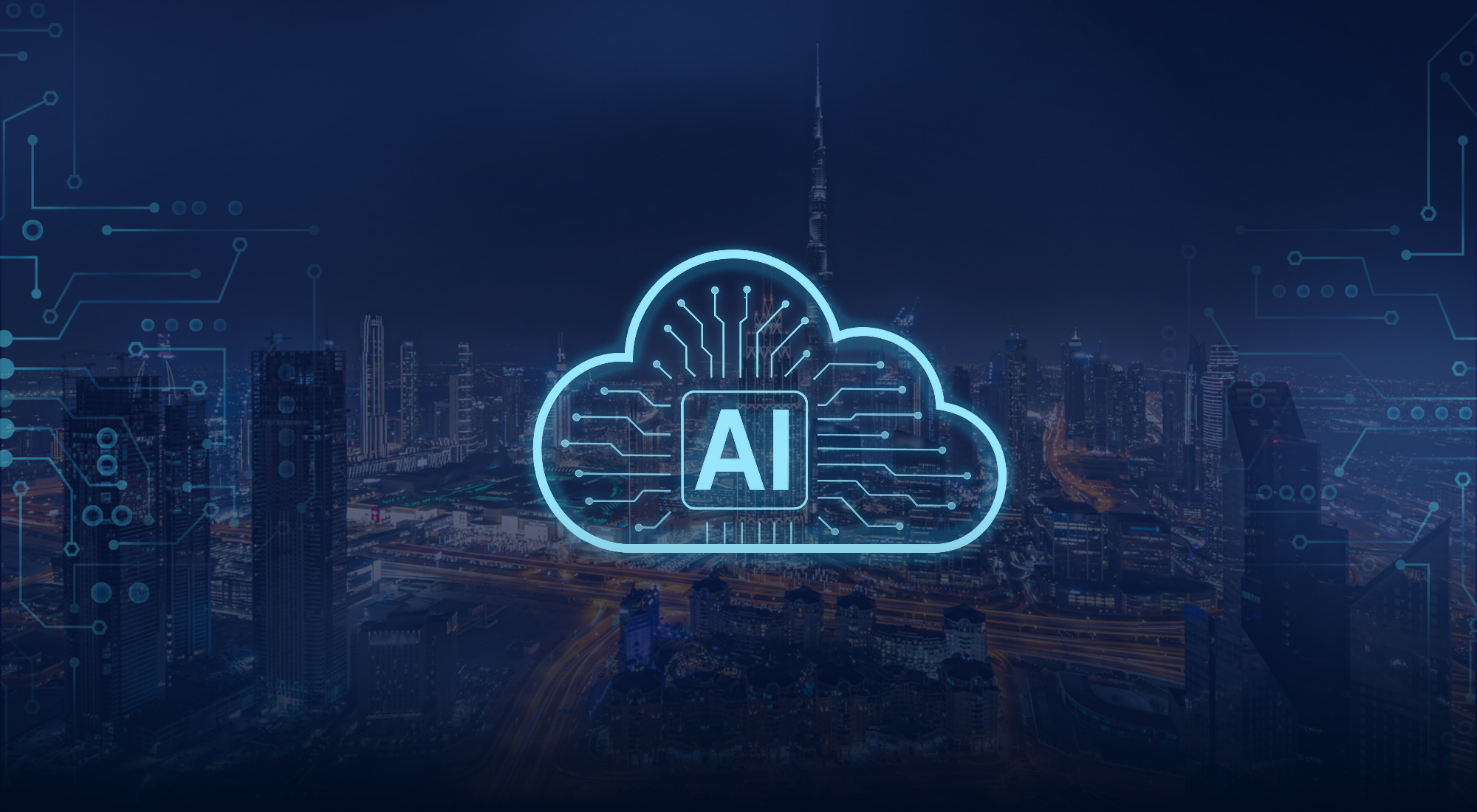Artificial intelligence (AI) represents an unprecedented technological revolution capable of fundamentally transforming every aspect of practical life. These advanced technologies provide tangible solutions to some of the world’s most pressing challenges, necessitating that AI play a leading role in serving humanity and safeguarding national security. In this regard, the UAE can benefit from this revolution to drive economic growth, enhance productivity, create high-quality jobs, improve government services, build sustainable smart cities, and strengthen national security.
AI is more than just a technological advancement. It is a comprehensive revolution reshaping how institutions operate, how services are delivered, and even how societies interact. Its effects extend far beyond operational efficiency to redefining business models, creating new industries, and transforming the nature of jobs and skills demanded in the labor market. Therefore, AI has become a cornerstone of national competitiveness, geopolitical influence, and the strengthening of a country’s soft power.
With the establishment of the largest AI hub in the UAE outside the United States, any delay or reluctance in adopting these technologies is not just a missed opportunity but a strategic challenge that could affect future prosperity and reduce the country’s regional and global influence.
In this context, two major models dominate AI development: the American and the Chinese models. These two models differ radically in methodology of use and application.[1] The evolution of AI in the United States and China reflects their social values, economic structures, geopolitical ambitions, and industrial, commercial, and scientific competition. While both are vying for global dominance in AI, their approaches and official policies differ significantly across several key dimensions, which can be summarized as follows:
The American model for AI development
The American model for developing AI is primarily rooted in capitalist thought, which emphasizes sovereignty, dominance, and exclusivity in the development and use of this technology. AI is treated as a rent-based commodity, provided as a subscription service with limited-cost public access. However, the costs of owning and developing these technologies are very high, making them accessible primarily to the wealthy and to large institutions capable of investing in them. In addition to that, access to development models remains restricted behind application programming interfaces (APIs), and not everyone can freely access them. This means that every use of any programming code requires payment of a price and is subject to US policies.
Innovation across applications is not available for everyone but rather rented from the owners of intellectual property, with no possibility of full ownership of these tools to build different applications. According to this American policy and vision, these tools are not available to the rest of the world to use as they wish, but rather are provided as a rent-based service controlled by a select few, similar to Microsoft’s tool rental system for office use. As a result, American AI tools become rented commodities that cannot be permanently owned. This model can be described as a form of capitalist technological feudalism where the U.S. maintains control over these resources; however, it wills and limits access to whoever it wants.
Strategically, the American model excels in total compute capacity, which is a critical factor in scaling AI deployment across multiple sectors, including drug discovery, logistics, industrial robotics, and scientific research.[2] Although China may soon reach parity with the U.S. in the quality of some individual models, its limited total compute capacity hampers its ability to mass scale, experiment with multiple approaches, and support a diverse ecosystem of leading AI firms. This limitation reduces China’s strategic impact on the global economy and soft power.
This American computing superiority is a strategic investment advantage, enabling the U.S. to deploy a greater number of “virtual employees” to perform cognitive tasks on a large scale, thereby multiplying economic and technological benefits while enhancing national power. Successive U.S. administrations have taken important steps to preserve this superiority, such as imposing restrictions on the export of advanced chips and equipment to China, which reflects their early awareness of the importance of computing dominance in the global AI race.
The American model is also based on a decentralized system of innovation, where the private sector drives scientific and technological progress through investments in top research institutions and universities. These entities focus on foundational research, technological breakthroughs, and market competition. This decentralized environment fosters a strong ecosystem supported by centralized cloud computing resources that integrate research and commercial applications effectively.
The U.S. continues to lead AI research by attracting a large number of top-tier researchers and scientists from around the world. Notably, researchers of Chinese origin represent about 38% of the top AI experts in the U.S. In this model, the dynamism of the private sector takes precedence: private corporations, startups, academic institutions, and government research grants serve as the primary funding channels. This competitive environment fuels innovation and accelerates the development of commercial applications. Moreover, the U.S. possesses a highly advanced AI research infrastructure, including access to high-performance computing systems, big datasets, and extensive international collaboration with researchers, companies, and think tanks worldwide, particularly in Europe.
The Chinese model for AI development
China has chosen a very different path from the American rent-based, monopolistic approach to AI. The Chinese model is built on a more centralized and compulsory framework that treats AI as a national infrastructure for software and application development. In this system, APIs and related resources are open-source and accessible to all developers. The source code and algorithms are shared freely, enabling users to utilize, modify, and distribute them without fees, intellectual property restrictions, or political barriers. The goal is to spread the benefits of AI widely among developers across the country to serve diverse societal needs. This approach strengthens the national economy collectively by enabling companies to create a wide range of applications tailored to both domestic and international markets.
Chinese policy places strong emphasis on making AI technologies widely available to its citizens at affordable costs, supported by broad access to open big datasets. This accessibility allows developers and users alike to benefit from this advanced technology.
In contrast to the American model, the Chinese model leans heavily on state-led strategic planning, with clear political direction to support the national economy, enhance research and development across all sectors, and make knowledge broadly accessible to the public. It relies on centralized administration and public oversight to guide AI development, at far lower costs than in the United States, thereby ensuring faster and wider access to technological resources.
The Chinese government seeks to integrate AI into its national policies, educational curricula, scientific research, and industrial strategies, treating it as a core strategic objective. State-owned enterprises and research centers play a leading role in AI development under policies that encourage the sharing of scientific and technological data. This strategy is designed to build qualitative superiority across civilian and military domains. By formally integrating AI into industrial policy and national security requirements, the government’s centralized control accelerates the efficient allocation of scientific resources for all beneficiaries.
Education and professional training are key priorities in the Chinese model. Significant effort is devoted to training professionals, strengthening domestic talent, and expanding AI-related programs in schools, institutes, universities, and research centers. China leverages its vast data resources to integrate AI into national industries, boosting efficiency, competitiveness, and speed of innovation across the development and manufacturing chain.
The model also prioritizes small and medium-sized enterprises, granting them quick access to open-source systems. This ensures wider AI adoption across scientific, research, industrial, and commercial fields. It allows for faster training of large-scale models, adaptation to local market needs, and an expansion of China’s share in global markets by offering efficient, affordable, and scalable solutions for a large user base.
Nevertheless, there remains a significant gap between Chinese and American capabilities when it comes to total compute capacity. Recent studies confirm that the U.S. retains clear superiority in processing power, with more advanced chips, cutting-edge equipment, and a more developed infrastructure. This advantage in computing is a decisive factor in driving economic transformation, ensuring technological leadership, and deploying AI systems on a large scale.
While China has managed to replicate American models and reach near-parity in benchmark performance, its limited total compute capacity restricts large-scale deployment, experimentation, and the support of a diverse ecosystem of leading AI firms. This diminishes its strategic influence on the global economy and soft power.[3]
Despite these challenges, China has made progress in developing powerful AI chips by circumventing U.S. restrictions, including producing advanced semiconductors through intermediaries, as seen with Huawei’s Ascend 910B and 910C chips. These offer compute capacity roughly equivalent to one million Nvidia H100 units (an earlier generation). However, such capabilities remain approximately four years behind U.S. technology. While China can produce strong individual models, it is still constrained in terms of full-scale deployment and economic expansion.
In short, the Chinese model emphasizes distributing the benefits of AI nationally, boosting industrial, educational, and societal capabilities through a centralized government strategy. By contrast, the U.S. maintains its dominance through superior total compute capacity, enabling it to widely deploy and use AI across its economy. This computing edge remains America’s true strategic advantage in the global competition for AI leadership, even if China manages to close the gap in the performance of individual models.
How the UAE can benefit from the AI revolution
This profound transformation in the use of AI requires the UAE to adopt an urgent, comprehensive government approach, an effort already underway. By drawing lessons from both the American and Chinese models of AI development, the UAE must integrate AI considerations into the planning of every ministry and department, aligning them with long-term national development goals, particularly in education, rather than limiting AI strategy to specialized technology departments.
To maximize the benefits of the AI revolution while minimizing its risks, it is recommended that comprehensive, cross-sectoral national strategies be formulated. These strategies should include investing in digital infrastructure, research, and development; developing human capital through early education, training, and re-skilling programs; establishing strong governance frameworks to ensure responsible and ethical use of AI; enhancing partnerships between government, the private sector, and academia; and confronting emerging challenges through active international cooperation.
How to benefit from development and competition between the two models in AI
The rivalry and development between the American and Chinese models of AI can be benefited from in several strategic ways. By understanding their differences and points of divergence, while simultaneously exploiting the innovations and complementary opportunities offered by each, the UAE can benefit at the national, corporate, educational, technological, and industrial levels. A flexible national strategy that engages with both sides would allow the UAE to draw on the best aspects of each model to accelerate its own technological, economic, and scientific growth.
Importantly, this competition between the American and Chinese models is not a zero-sum game. It should not be viewed as an end in itself, but rather as the beginning of an era of technological plurality. For the UAE, this rivalry represents a strategic opportunity to reshape global innovation and knowledge production to its own advantage. The state can benefit from this opportunity by:
1- Adopting technologies aligned with national needs and developing them locally in line with economic and social priorities:
The state should analyze its national needs across economic and social sectors, such as healthcare, education, industry, transportation, and public services, to identify the most suitable technologies. Once identified, these technologies can then be developed locally to ensure full integration within the national environment and responsiveness to the real needs of society. This approach guarantees that investments in AI lead to practical, applicable solutions and support the sustainable development goals.
2- Leveraging the diversification of advanced technological sources from both countries in a systematic and organized manner to maximize returns:
The state can benefit from diversifying technological sources between the American and Chinese models by selecting the most suitable solutions from each, based on national priorities. This requires the establishment of systematic mechanisms for evaluating, selecting, and adopting technologies that deliver the highest return on investment, while at the same time preserving national independence and ensuring the ability to adapt to various global constraints and challenges.
3- Stimulating investment in digital infrastructure to build integrated national capabilities in data, computing, and qualified human talent:
Digital infrastructure is the backbone of AI. This includes cloud computing, data centers, high-speed communication networks, and systems for storing and analyzing big data. Equally important is the development of programs to train national talent in data science and AI engineering to ensure the sustainability of this infrastructure and maximize economic and scientific returns.
4- Strengthening institutional collaboration in research and development across disciplines, with a focus on supporting small and medium-sized enterprises (SMEs):
Collaboration among research institutions, universities, and private companies fosters innovation and facilitates knowledge transfer across sectors. SMEs, with their agility and capacity for experimentation, provide the ideal environment for applying innovations and transforming them into marketable products and services, thereby accelerating the growth of the national technology economy.
5- Supporting startups to adopt hybrid or locally developed solutions that enhance competitiveness in emerging national markets:
Startups can use open-source AI technologies to design local solutions that directly meet societal needs, such as applications for healthcare, education, and smart agriculture. This strategy enhances technological entrepreneurship, reduces the cost of innovation, and increases the inclusiveness of benefits across society.
6- Leveraging technological plurality from both models to avoid reliance on a single source:
Dependence on a single provider of advanced technologies exposes the country to political and economic risks. By combining American and Chinese technologies, the country can secure its technological independence and ensure the continuity of critical operations even under sanctions or international restrictions.
7- Driving local innovation by adapting and integrating American and Chinese technologies to create innovative local solutions tailored to national needs:
Combining the best practices of both models, like China’s open innovation and America’s high-performance computing, can generate smart national solutions that suit cultural context, economic needs, and national security requirements, enhancing the country’s global competitiveness.
8- Expanding international and regional cooperation, particularly with Arab countries, and building balanced technological alliances to form joint collaboration groups that benefit from competition between the two sides:
Strategic partnerships can be established with countries of the region to facilitate the exchange of expertise and technological resources, generate joint research outputs, and develop regional AI capabilities. Such alliances create a safety net against global competition and enable the sharing of data, experiences, and practical know-how.
9- Developing smart national policies and strategies based on an assessment of each model’s strengths and weaknesses:
A comprehensive strategic analysis of both models should be conducted to identify elements that can be adopted in national policies. This strategy helps establish clear regulatory frameworks, guides investment priorities, promotes innovation, and ensures maximum benefit from global advancements.
10- Diversifying sources of education and training, building competencies, and encouraging educational and research projects that integrate American and Chinese technologies:
Diversifying learning sources ensures the development of a qualified workforce across AI specializations and enables the integration of global experiences into national curricula. Supporting joint educational and research projects promotes innovation and creates a conducive environment for sustainable technological innovations.
11- Promoting digital education through tools from both sides to maximize technological innovations and establish an advanced and sustainable educational and research environment:
Advanced educational platforms and digital tools inspired by both models can be used in schools and universities to train students and researchers in the latest AI techniques. This creates a practice-based and innovative educational environment and lays the foundation for a strong knowledge base that supports the country’s technological future.
The ongoing U.S.-China competition in AI presents a golden opportunity for the country to select and adapt what best serves its national security needs at all levels, develop smart local models, avoid technological dependency, and accelerate digital transformation at lower cost and higher efficiency.
For the UAE to fully harness the benefits of AI in driving development, advancing progress, and improving the quality of life, it must establish comprehensive and regularly updated national AI strategies. These strategies should be revised semi-annually to keep pace with rapid advancements in the field and to benefit from the competition between the American and Chinese models. These strategies must also include a long-term vision, measurable objectives, and key performance indicators to track progress, guided by the following:
1- Intensive and urgent investment in digital infrastructure: The country must accelerate investments in advanced digital infrastructure, including high-quality broadband networks, ultra-fast cloud computing, data centers, and cloud infrastructure. These will support AI requirements for computing, storage, and the aggregation of government data (with full consideration for privacy and security), making it available as a service (Data as a Service) to stimulate innovation and scientific research.
2- Developing and qualifying human capital for the future: Comprehensive and urgent national programs are needed to reskill and upskill the country’s workforce, with a focus on advanced digital skills, data science, and AI engineering. AI concepts should also be integrated across all stages of education, particularly at the early stages, to create a generation capable of adapting to future labor market needs.
3- Reforming and modernizing educational curricula: AI, data science, and programming must be introduced from the early stages of schooling, with emphasis on teacher training. Workers in traditional sectors should also be empowered to acquire the skills needed to work with AI. Universities and national research centers must be supported to lead innovation in core, applied, and cognitive AI fields.
4- Strengthening research and development, and innovation: Sustainable funding should be allocated to AI research and development, alongside the establishment of centers of excellence and promotion of partnerships between universities, research institutions, and the private sector, particularly the SMEs. This will help in developing innovative solutions that address national needs and enhance competitiveness.
5- Establishing strong frameworks for AI governance and ethics: It is essential to design clear and flexible legal and regulatory frameworks that ensure the responsible and ethical use of AI. These frameworks must emphasize fairness, transparency, accountability, data privacy protection, and the prevention of algorithmic bias, while ensuring human oversight of critical decisions.
6- Building a supportive AI ecosystem: This requires strengthening public-private collaboration, supporting AI startups (especially SMEs), and simplifying government procedures for adopting innovative solutions. The government should act as an enabler of innovation and create an environment that attracts talent and investment.
7- Enhancing innovation and scientific research: Investment must be expanded in specialized AI research centers while promoting cooperation between universities and technology companies and funding pioneering research projects in fields such as natural language processing, robotics, and deep learning. Modern curricula that combine technology and creativity should be developed, and the workforce must be trained in future-oriented skills such as programming, data analytics and AI fundamentals.
8- Active participation in international cooperation: The country should actively participate in global efforts to set international AI standards, share experiences and best practices, and address cross-border challenges such as cybersecurity and data manipulation.
9- Focusing on AI applications with social and humanitarian impact: In addition to the outstanding economic returns, AI investments should be directed toward areas that directly serve citizens, support sustainable development goals, and reinforce national identity and pride in citizenship. These include improving healthcare, ensuring quality education for all, developing efficient transport and infrastructure, addressing environmental challenges, and meeting citizens’ needs in ways that reduce costs, time, and bureaucracy.
10- International cooperation and strategic partnerships: The country must engage in global efforts and cooperate with international organizations and advanced economies to set universal AI standards, attract expertise, recruit global talent, and enhance knowledge and technology transfer.
11- Strengthening internal security: AI can be deployed to enhance national security by improving data analysis capabilities, enabling proactive threat detection, combating crime, and analyzing criminal activity patterns. It can also strengthen cybersecurity, allowing for faster and more intelligent detection and prevention of cyberattacks.
12- Diversifying national income sources: This can be achieved through the development of technology-based industries (such as programming, data analytics, and cloud services) and the attraction of investment through supportive legislation and an investor-friendly environment. Particular focus should be placed on supporting national startups and financing AI-driven projects.
Conclusion
The AI revolution has become a powerful driving force in national development that cannot be ignored. The AI’s potential to boost economic productivity, improve government services, build sustainable smart cities, and elevate vital sectors such as agriculture, healthcare, and education offers unprecedented strategic opportunities for countries aspiring to leadership and prosperity.
At the same time, this revolution poses significant challenges related to the labor market, the digital divide among members of society, ethical dilemmas, personal data privacy and protection issues, cybersecurity threats, and the urgent need for resilient and comprehensive regulatory and legal frameworks. However, the greatest challenge lies in how the country manages this complex transformation to ensure that AI’s benefits are inclusive, equitable, and productive, while effectively mitigating potential risks.
Meeting these challenges requires a formal, multidimensional strategic approach that combines technological investment, human capital development, good governance, and effective international cooperation.
[1] Stanford Institute for Human-Centered Artificial Intelligence (HAI), “Artificial Intelligence Index Report 2025,” Stanford University, April 2025, https://hai-production.s3.amazonaws.com/files/hai_ai_index_report_2025.pdf.
[2] Lennart Heim, “China’s AI Models Are Closing the Gap—but America’s Real Advantage Lies Elsewhere,” RAND Corporation, May 2, 2025, https://www.rand.org/pubs/commentary/2025/05/chinas-ai-models-are-closing-the-gap-but-americas-real.html.
[3] Ibid.








